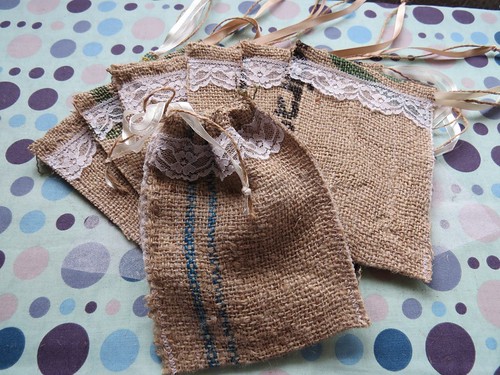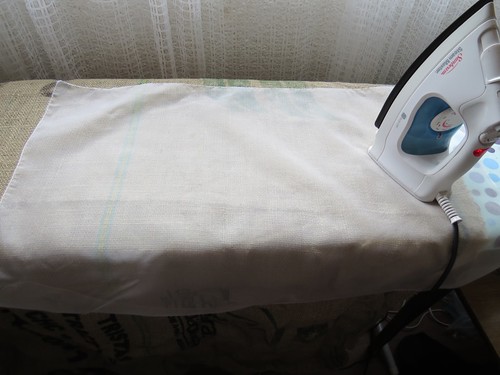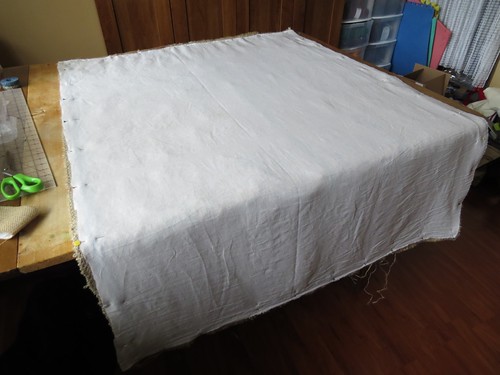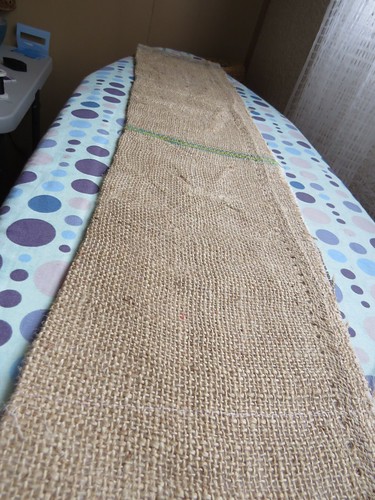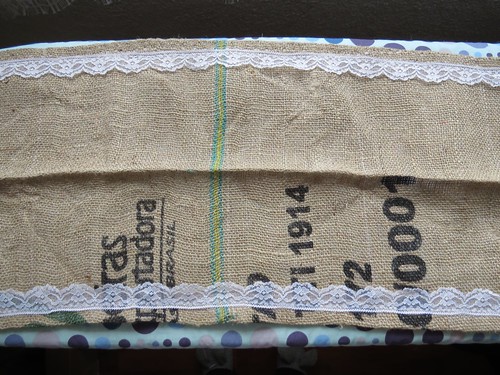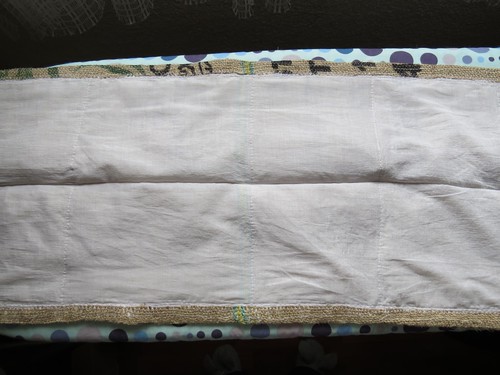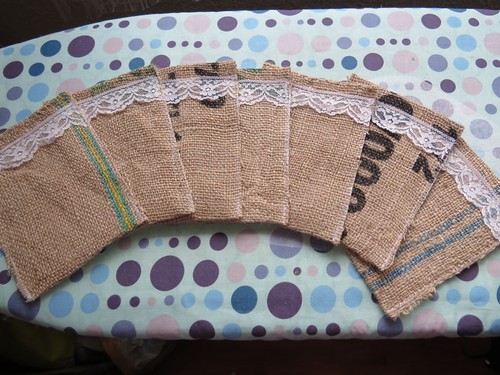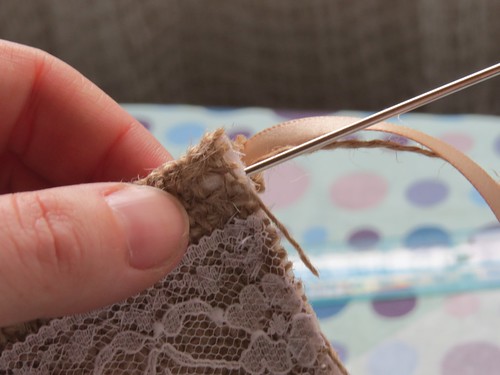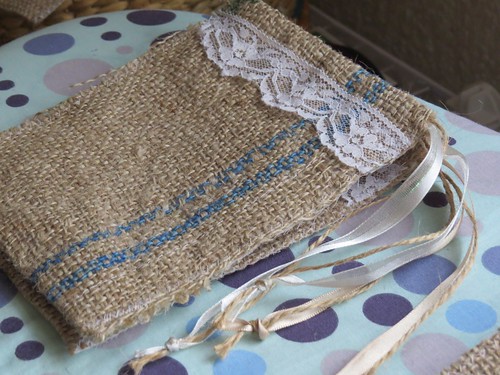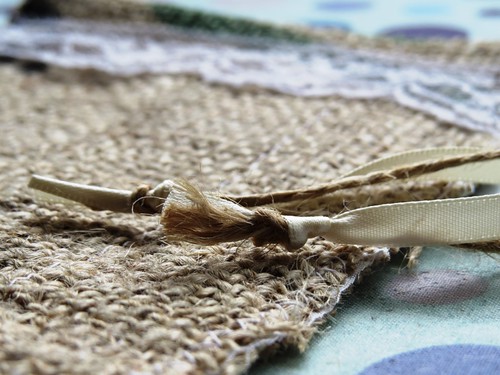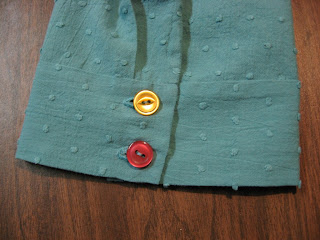She's planning on having a country wedding at my Grandma's country farm house. She showed me all of her plans when I was visiting in April, which involve a lot of burlap and candles and lace and haybails and all sorts of gorgeous ideas. And she's trying to do it all on a dime.
Her wedding favours will be a candy table, and people can fill up little fabric bags with which ever candies they'd like. It's a cute idea that I've seen before, and a ton of fun. Especially since everyone will be higher than a kite on sugar!
But their plan was to just get whatever fabric they could find and toss together these little bags. I looked at the mismatched bits of satin and cotton and polyester they'd gathered together, and I admit, made a bit of a face. It just wasn't going to match with the rest of the theme.
Since I really wanted to help out despite being so far away, I (of course) volunteered to take over this project. My cousin seemed more than happy to hand it off, especially after the ideas I tossed out.
Here's my first attempt at it! They're about 6.5"x5" in size. I'm going to walk you through how I made them. Just because. :)
I was able to source some free burlap in the form of coffee bean jute bags from a local coffee roaster. Which are soooo cool because they have all of this great graphics printed on them! I washed them a couple of times, dried them a couple of times (the second time to try to get rid of more of the fluff they generated after washing), and then spent most of today ironing out the plethora of wrinkles that set in.
It took a healthy dose of heat, steam, and a lot of arm muscle to press those damn wrinkles out! And holy crap is there a lot of fluff all over my sewing room now.
I LOVE the graphics! Seriously, I'm saving one of these bags to make up into a burlap messanger bag for myself.
Because these bags will be used to hold candy, I lined them with some tight-weaved but light-weight cotton. I'm actually considering using plastic instead for the next batch, which I didn't think about until just now. Actually, I might just include some plastic sandwich bags to go inside of them. Might be easier, on me and my sewing machine.
Once I basted the fabric to the jute bag, I cut it into 15 inch wide strips. These strips were pressed in half length-wise, and the raw edges folded over and sewn down to create a draw string loop on the top of the bags.
Then I zig-zagged some lace just underneath the draw-string loop. Finally found a use for my vast collection of vintage and modern lace!
Here's the other side. You can see the lining and the folded over tops for the draw-string.
Then I just folded the strip in half again, cut them into 5 inch wide bags, and zigzagged along both edges just below the draw-string loops.
Thread some lace and jute through the draw-string loops...
And voila! Seven adorable favour bags finished...
...only another 200 to go. Sweet peanuts...
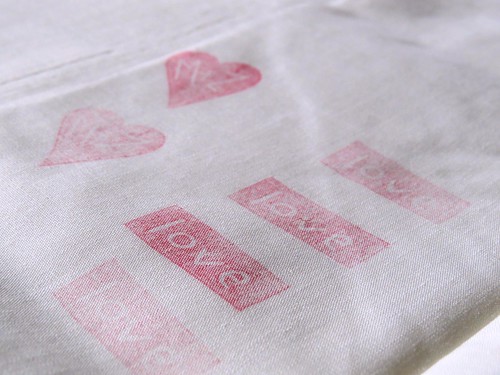 |
| Plans and experiments for some non-burlap bags... |

